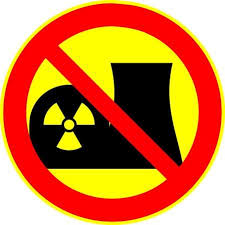The idea of using nuclear power for spaceflight has been around for decades. Different designs have been proposed but not built. It looks as if technology has caught up reality and NASA is seriously considering the use of nuclear propulsion systems to power spacecraft.
BWX Technologies Nuclear Technology, Inc. (BWXT NE) is a U.S. company headquartered in Charlotte, North Carolina. It manufactures nuclear components and provides engineering, design, construction, inspection and repair services.
Last year, BEXT NE announced an eighteen million eight hundred thousand dollar that it had been granted an award under the Game Changing Development Program at NASA for work on a nuclear thermal propulsion (NTP) system. This three-year grant will enable the company to manufacture and test prototype nuclear fuel elements.
BWXT NE will also assist NASA in figuring out how to address and resolve nuclear licensing and regulatory requirements. BWXT NE’s goal is to help NASA refine the feasibility of and affordability of the development of an NTP rocket engine. They will deliver the technical and programmatic data required to actually implement this new technology.
BTXT NE just held an event for officials from the Space Technology Mission Directorate (STMD) of NASA yesterday. BWXT NE gave the NASA representatives updates and technology demonstrations of their nuclear thermal propulsion (NTP) project to build a reactor that could be incorporated into a rocket engine to carry a crew to Mars and back.
Rex Geveden is the BWXT NE president and CEO He said, “We believe that NTP is an ideal propulsion system to take humans to Mars, and our scientists and engineers are working every day to make that a reality.”
James Reuter is the NASA acting administrator of STMD. He toured the BWXT NE Advanced Technology Lab in Lynchburg, Virginia to review progress on the new BWXT NE reactor. BWXT NE staff demonstrated three new technologies that they are working on for the project. The three areas of research are advanced welding, metallography and fuel element filling. Metallography is the study of the physical structure and components of metals, by using microscopy.
BWXT NE says that its compact reactor design which burns low-enriched uranium can be incorporated into a rocket engine which has significant advantages over current chemical-based rocket engines. NTPs have double the efficiency of the most powerful chemical rockets and much greater power density.
Sonny Mitchell is the Nuclear Thermal Propulsion manager at NASA’s Marshall Space Flight Center. He said “As we push out into the solar system, nuclear propulsion may offer the only truly viable technology option to extend human reach to the surface of Mars and to worlds beyond. We’re excited to be working on technologies that could open up deep space for human exploration.”
It is hoped that a NTP engine could cut the travel time to Mars from six months to just four months. This would result reducing the exposure of astronauts to dangerous radiation in space. It will also reduce the mass of the space vehicle which means that it can carry addition payloads of fuel and supplies.
Blog
-

Nuclear Reactors 625 – BWXT Nuclear Engineering Is Working Under A NASA Grant To Develop Nuclear Thermal Propulsion
-

Geiger Readings for Oct 16, 2018
Ambient office = 107 nanosieverts per hour
Ambient outside = 123 nanosieverts per hour
Soil exposed to rain water = 119 nanosieverts per hour
Crimini mushroom from Central Market = 108 nanosieverts per hour
Tap water = 73 nanosieverts per hour
Filter water = 65 nanosieverts per hour
-

Nuclear Reactors 624 – Problems With The Use Of Nuclear Power To Fight Climate Change
There are many reasons that nuclear power cannot be used to fight the climate crisis. Here are just a few of them.
Currently, nuclear power supplies about ten percent of electricity world-wide with about four hundred and fifty nuclear power reactors. We would have to go on crash program of licensing and constructing thousands of new power reactors which can cost up to ten billion dollars each. This would cost trillions of dollars. Where is that money going to come from?
If we do go on a reactor building spree, the price will rise because it always does. Not one single nuclear power project in the U.S. since the 1950s has ever come in within the estimated budget and schedule. Billions of additional dollars beyond estimates would be spent. Schedules would slip and/or quality control would slip which would increase the probability of accidents.
There seems to be roughly one major accident at a nuclear power plant every ten years. If we built thousands of new nuclear power plants as fast as we could, then the time between accidents would inevitably drop to one every few years. Look at what happened when Fukushima blew up. It slowed or stopped some reactor projects while they redesigned new projects and reinforced old ones. And the public and investors will reject nuclear power because of accidents at nuclear power plants. Governments would plow ahead ignoring complaints until there were riots and rebellions. New plant projects would be sabotaged.
An increase in uranium mining would be required to fuel the reactors. Uranium mining has already devastated many environments around the planet, often on indigenous people’s land. Mining ten times the uranium would be a huge environmental disaster. Governments would ignore it because they think we have to do this to fight climate change. This would cause riots, rebellions, civil wars, etc.
Nuclear power is not carbon free. Yes, a nuclear power plant does produce less than a fossil fuel plant over its life-time but it builds up a carbon debt as the uranium is mined, refined and transported. It also emits a huge amount of carbon dioxide as the concrete that went into its construction dries. I have heard that it takes years of operation to pay off that original carbon debt.
It can take more than ten years to site, construct and turn on a nuclear power plant. We don’t have ten year. And we don’t have the extra five or ten years beyond that to pay off the carbon debt.
Nuclear reactors have already been shut down because the body of water they were using became too warm to be used for cooling. Climate change will continue to heat bodies of water and this includes the oceans. This will interfere with the operation of the plants.
There is already so much spent nuclear fuel being stored onsite at U.S. nuclear power reactor sites that they are running out of room. There will not be a permanent disposal facility in the U.S. until 2050 at the soonest. If we went on nuclear reactor building spree, the waste would have to be stored above ground temporarily which leads to a number of major problems. If and when we do have a permanent repository for spent nuclear fuel, thousands of tons would have to be transported from all over the U.S. with attendant safety and environmental problems.
I could go on, but I hope that my readers get the point that there is no way that nuclear power will help solve the climate crisis. According to the conservative IPCC report, we have twelve years to reduce our carbon emissions by forty percent. Nuclear power simply cannot ramp up fast enough and there is not enough money in the world to pay for an attempt. -

Geiger Readings for Oct 15, 2018
Ambient office = 97 nanosieverts per hour
Ambient outside = 112 nanosieverts per hour
Soil exposed to rain water = 115 nanosieverts per hour
White onion from Central Market = 137 nanosieverts per hour
Tap water = 73 nanosieverts per hour
Filter water = 66 nanosieverts per hour
-

Geiger Readings for Oct 14, 2018
Ambient office = 87 nanosieverts per hour
Ambient outside = 81 nanosieverts per hour
Soil exposed to rain water = 89 nanosieverts per hour
Celery from Central Market = 40 nanosieverts per hour
Tap water = 80 nanosieverts per hour
Filter water = 71 nanosieverts per hour
-

Geiger Readings for Oct 13, 2018
Ambient office = 110 nanosieverts per hour
Ambient outside = 66 nanosieverts per hour
Soil exposed to rain water = 71 nanosieverts per hour
Bartlett pear from Central Market = 79 nanosieverts per hour
Tap water = 83 nanosieverts per hour
Filter water = 58 nanosieverts per hour
